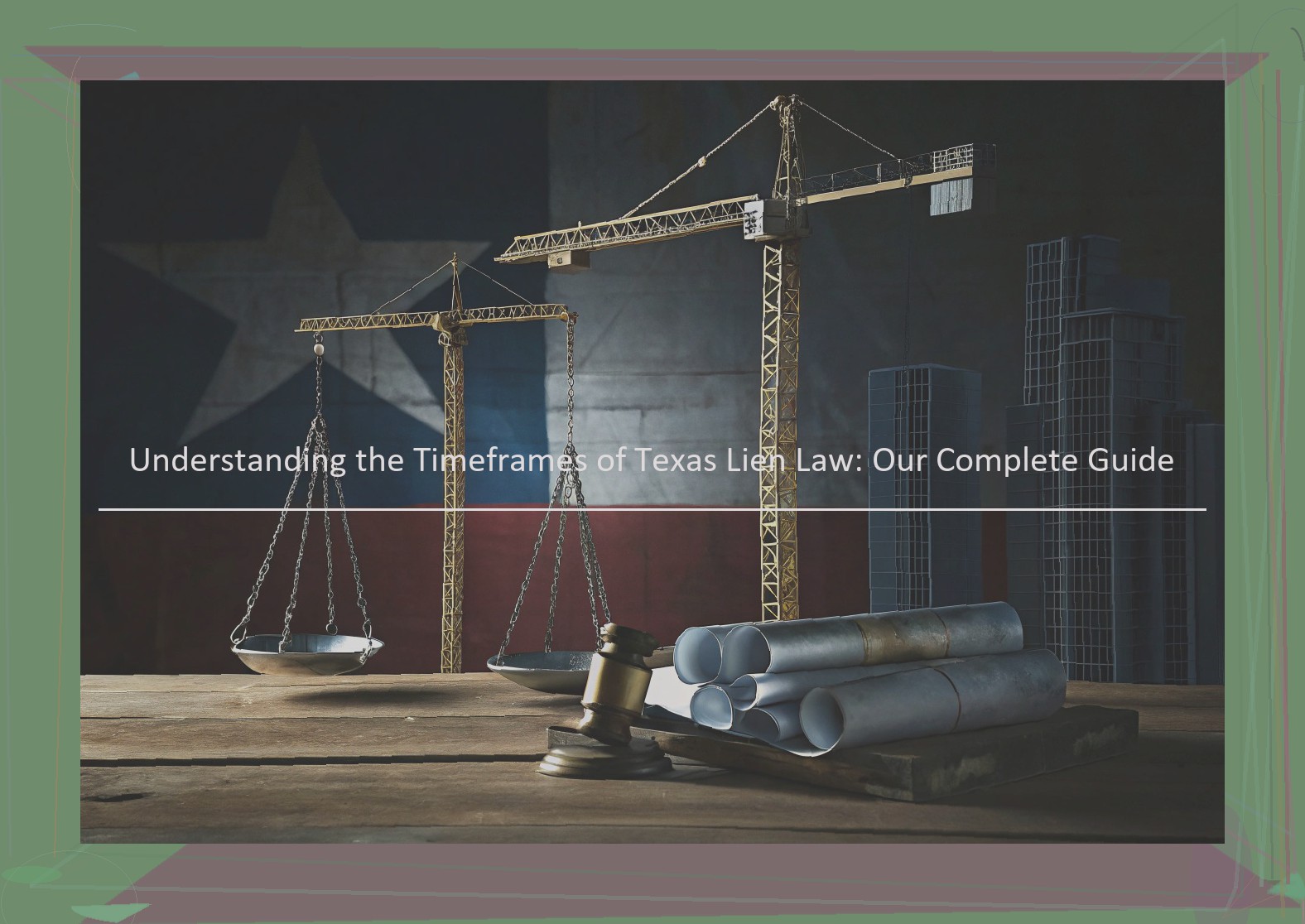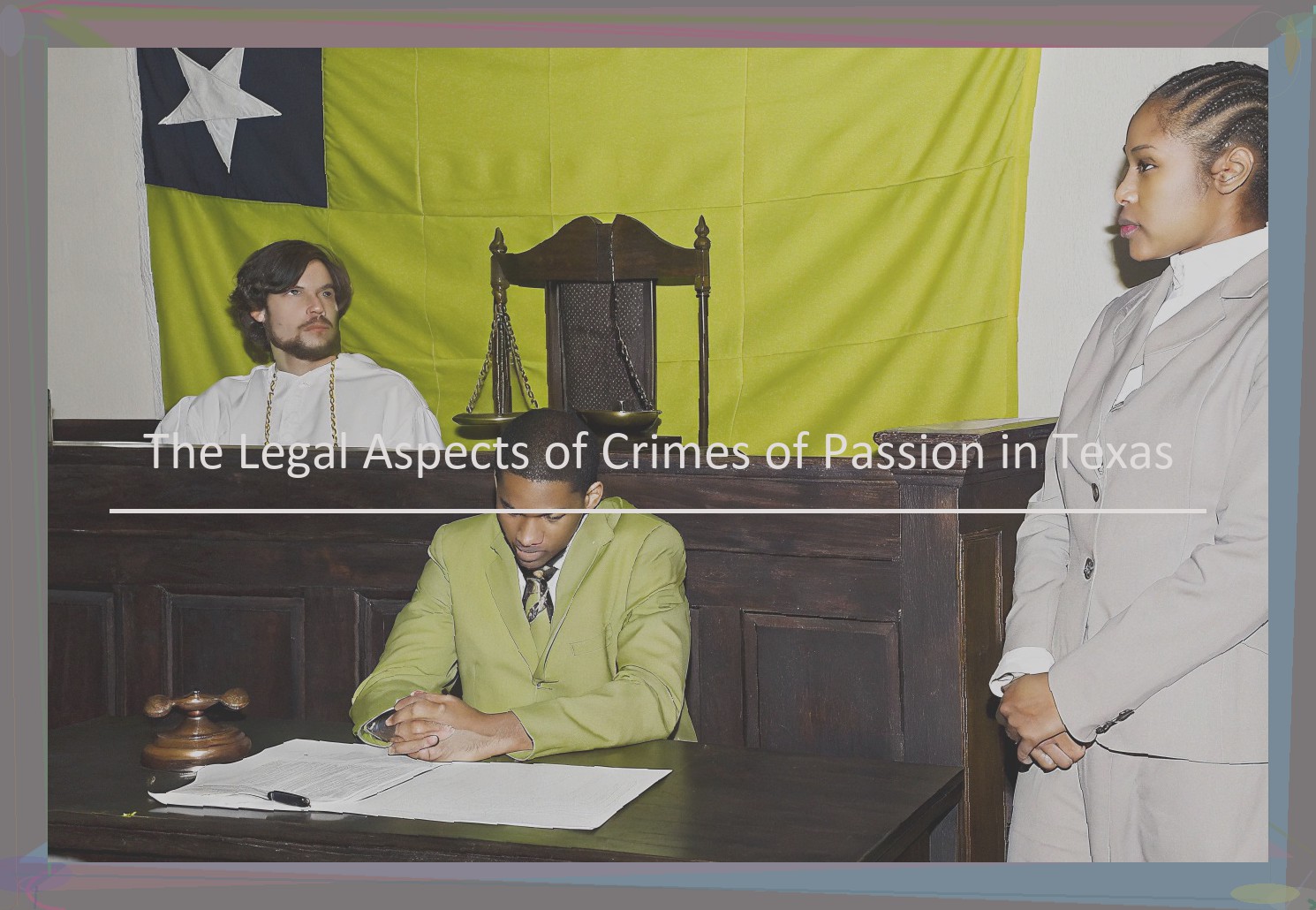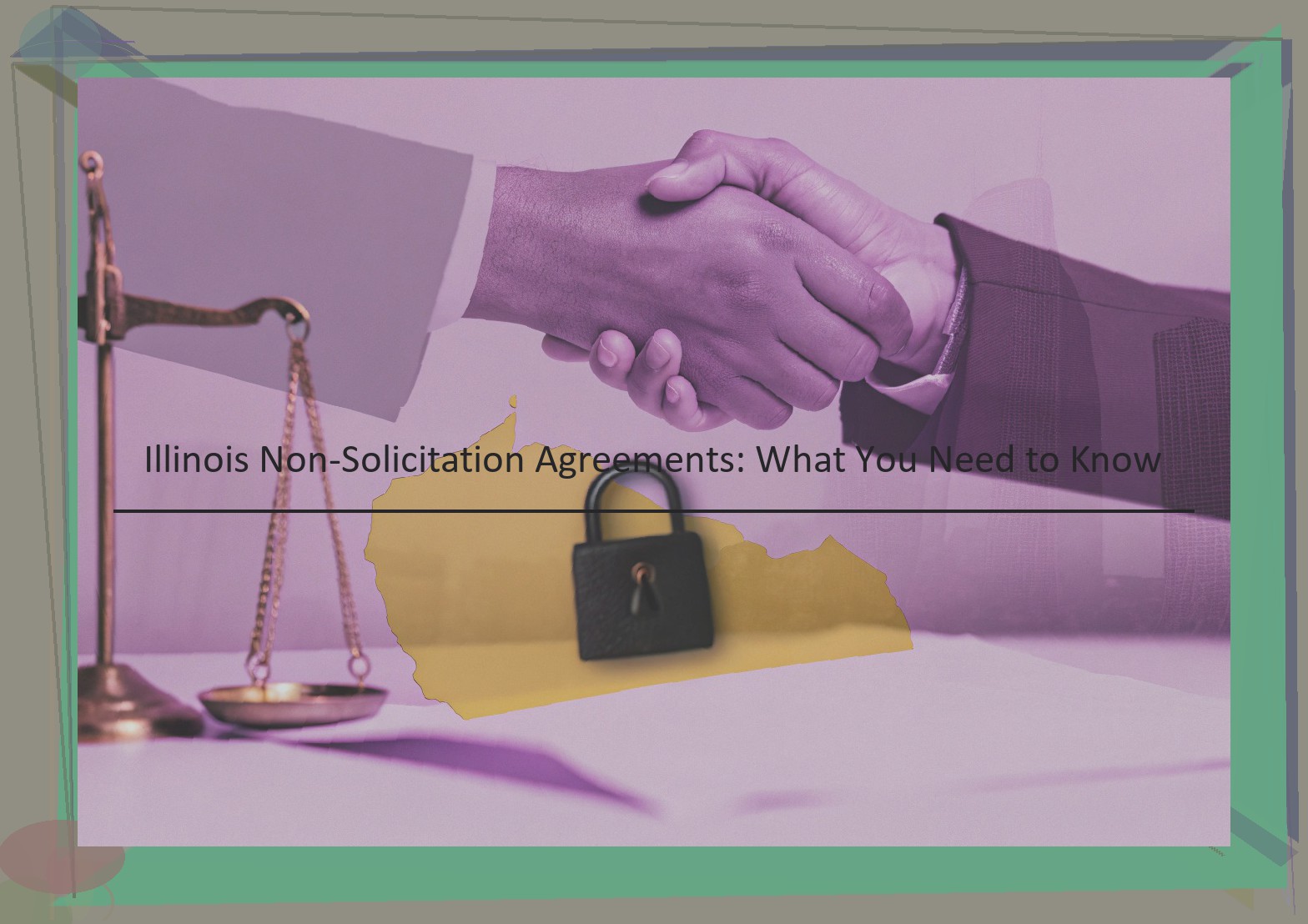
A Primer on the Lien Laws of Texas
Texas lien laws serve the important purpose of protecting the rights of those who provide work and materials to properties within the state of Texas. Such protections exist in order to ensure that those who faithfully perform work or furnish materials to a construction project don’t end up getting stiffed by a property owner or general contractor on a construction project. It is for this reason that Texas law allows you to file a lien on the real property against which the work or material was provided.
While this blog post cannot provide specific individualized assistance to any one property owner or construction professional in understanding a Texas lien law, it can help you understand general concepts about Texas lien laws. From enforcement of your right to file a lien to the setting deadlines to enforce that right, this Texas lien law deadline flowchart will help you understand some basic Texas lien law concepts . This blog post will give a general overview of Texas lien laws so that you can better understand some of the concepts discussed in the flow charts below. In general, Texas lien laws only provide the enforcement right if you strictly follow all timelines laid out in chapter 53 of the Property code.
Many Texas lien law deadlines require that you send notices prior to filing a lien. For example, under the general version of chapter 53, those that furnished materials or labor to a residential construction project are required to deliver a notice of non-payment (also known as a "30-day notice") to the owner within 30 days of when the work was performed or materials were delivered. Failure to deliver this notice would generally prohibit a later filed lien from being enforced. One some projects, other timeline have also been created that require extra steps to enforce the right to file a lien. However, many of these other timelines do not require delivery of notices.

What is a Crime of Passion?
Although not given a legal definition in Texas statutes, a crime of passion is generally considered an offense that is committed when the perpetrator is emotionally or psychologically compromised. The term is most commonly associated with homicides, as it is thought that murder charges can be mitigated when there is evidence that an emotional trigger, rather than a premeditated intent to kill, was to blame for the offense.
In most cases, the "crime of passion" must occur during, prior to, or shortly after the triggering event that induces emotional duress on the perpetrator.
The Texas Penal Code does include a legal definition of "sudden passion," which is based on extremely temporary circumstances and must be proved by a preponderance of evidence – meaning that it more likely than not existed – in order for it to mitigate culpability for a murder charge:
"(a) A person acts under the immediate influence of sudden passion if he or she engages in conduct that would otherwise be an offense and he or she: (1) commits the offense intentionally and knowingly; and (2) is under the immediate influence of passion resulting from provocation by the deceased or another acting with the permission of the deceased. (b) In this section , the term sudden passion means a passion so acute that the mind of the actor is at the time incapable of cool reflection."
The penal code goes on to define "provocation" as "an offense that would commonly produce a degree of rage in a partial ordinary person." Under Texas law, a crime of passion can therefore be defined as one that is committed due to highly aggravated provocation – in other words, in the heat of the moment without premeditation. These types of crimes frequently involve relationships, especially in cases of domestic violence in which one partner suffers severe provocation at the hands of the other. Other common examples include:
The bottom line is that defining criminal offenses involving passion is a complex undertaking. While there are degrees of offense such as manslaughter or intoxication manslaughter that may be charged in situations that meet the criteria of a crime of passion, not all crimes of passion will ultimately be punished in the same way in the Texas criminal justice system. Experts can help defense an individual’s legal rights in cases such as these.
What is a Public Relations Agreement?
The universe of business-to-business contracts encompasses a huge variety of agreements including those that may govern the typical IT professional’s life such as employment agreements, consulting agreements, buyback agreements and even agreements related to the acquisition or sale of a business. This article though will focus on a contract specific to the public relations industry, the public relations contract.
A public relations contract is a master service agreement that typically governs the general terms and conditions under which public relations services are provided by a public relations firm to a client. When the services change, or when the parties want to amend the terms of the relationship, the parties will usually draft an addendum to the original public relations contract to cover only the subsequent engagement of services. Amendments can be done in one document or in pieces. In other words, a public relations firm can start with a solid framework or template and utilize that deal structure when dealing with these types of client matters. Regardless of how the particular engagement of services is drafted and presented, the public relations contract should include the following general contract provisions: A public relations contract is the initial or master agreement that establishes the general region of the parties and governs the terms and conditions of the work that is to be done. Public relations contracts are essential , and probably more significant in the public relations industry than perhaps in any other type of industry because the nature of the work requires that the relationship between the public relations firm and its client be recognized as a partnership or as a cooperative arrangement between two disparate groups that ultimately share the same goals.
In addition to creating a framework for the work that is going to be done, the public relations contract will typically outline the various protections that need to be in place to manage the expectations of both the public relations firm and its client. For example, the person at the public relations firm that handles a particular account will be concerned about the length of time that he or she is expected to have to devote to a particular engagement, what types of tasks can be assigned, and what the budget is going to be. Meanwhile, the person that is handling the contract on behalf of the client is going to be concerned about what happens if the public relations firm does not provide the service in a timely manner, what happens if the public relations firm overbills for services, or what if either party decides that they do not want to continue with the agreement.
Significantly, because many times the relationship is personal rather than contractual, the public relations contract should address the approach to be taken if there is a change in personnel. This would include the right to terminate the relationship if the individual assigned to the account leaves the company, an individual is assigned to the position, or if there is a change in title of the person that is assigned to the account. Other terms to be addressed in the public relations contract are limitations of liability, confidentiality, indemnification, choice of law, and jurisdiction provisions.

What is Common-Law Marriage?
Common law marriage is a concept that is often misunderstood. However, it is necessary to have a basic understanding of the concept and the theory behind it, in order to make sense of the information which follows. So, as such, we will start with a very basic common law marriage definition. A common law marriage is just a couple living together and holding themselves out to be married, with the requisite intent to be married. Not to make things too complicated, but some scholars would include ceremony and consummation as two other requirements necessary to forming such an agreement.
The historical theory behind the institution of common law marriage is pretty simple – a couple living together as husband and wife should have the same legal benefits as couples that married with a formal ceremony. In other words , common law marriage is premised on the theory that a couple with a stated intent to be married should not be penalized under the law when compared to couples that go through the process of a formal marriage. Part of the general concept of common law marriage is based on the premise that it is just as possible for a couple to make an intent to be married without a formal ceremony as it is for a couple to make an intent to get married with a ceremony.
A very important distinction between common law marriage and a ceremonial marriage is that you do not need a marriage license to legally marry under common law. Further, in Ohio, no governmental agency can enter a certificate of common law marriage into its records. Therefore, this keeps any governmental agency from ever showing the existence of a common law marriage in their records. So, a common law marriage cannot be proven by contract and cannot be registered. This is not the case with ceremonial marriage.
Defining California Unpaid Internships
As with the definitions previously mentioned in this post, there is no unique definition for an unpaid internship in the general sense. However, California has some bright-line rules regarding unpaid internships applicable to entities in the non-profit sector. Many of these definitions are, however, premised on some underlying principles that apply to other entities and assist a reader in understanding what an unpaid internship is. Specific to the nonprofit sector and for purposes of California law, an unpaid internship is one in which the unpaid intern is an enrolled student in a program that specifically qualifies under California Education Code Section 66010.4. Under that section (the relevant portion of which is 66010.4(a)(2)), a program is one that is associated with or integrated into a college, university, or other degree-granting academic program and that requires enrollment by a student. This means that internships qualifying as unpaid must be associated with an academic program that is, in turn, integrated into a regular college or university program in that it is part of a larger course of study . Further, the program must require enrollment, meaning that it cannot be voluntary for the student; rather, he or she must be enrolled in order to participate in the program. Furthermore, an academic program qualifying under Education Code Section 66010.4 is one that is recognized by a nonprofit institution of higher education separately accredited from the trade or vocational institution where the course of study is taught. It should be noted, though, that Education Code Section 66010.4 doesn’t always apply to programs designed only for high school students. In such cases, a nonprofit can still qualify for the exemption if the program meets the requirements of section 1299.6 of the Labor Code. While the Labor Code does not define "apprentice," it does provide that, among the requirements for an apprenticeship program and therefore to qualify for this exemption, the program must also include a progressive paycheck system and a defined term of employment.

What is a Non-Solicitation Agreement?
A non-solicitation agreement is a contract designed to prevent former employees from persuading their former employer’s customers, clients or business contacts to move their business to a new employer. In the context of Illinois employment law, these agreements are generally used to protect a company’s interest by preventing employees from soliciting business from former clients for a period of time after they leave the employment of the company. This is particularly important in professions where breach of such a contract can literally be the difference between existence and failure. The fair application and enforcement of not only these contracts but also trade secrets and other confidential information is crucial to maintaining healthy competition and innovation while protecting business interests .
These clauses are often found in broader employment contracts or may be set out as standalone agreements, perhaps as part of a nondisclosure agreement. For the most part, these agreements are interpreted fairly narrowly so as to allow for an free-flow of information that should not be restricted by a contract. Depending on how the agreement is worded and its purpose can vary greatly from case to case. It may place simply a limit on the ability of the employee to contact former customers for a specific period of time after leaving the company, or it may apply to all former contacts to which the employee had contact with regardless of the outcome of that contact. This brings into play a much more nuanced interpretation and application of the contract.
Kansas Tint Laws Explained
Understanding the terms of Kansas tint laws are very important if you have a car or plan to invest in a car in Kansas. Whether you’re buying a brand new car or an older used model, it’s important to know that the law has specific requirements about how much tint you are legally allowed to have on your windows.
The window tint laws in Kansas are some of the most flexible and lenient in the United States when it comes to what colors and levels of tint are legal. The main requirements state that the front windshield must be 35 tint percentage for the top 5 inches and no less than 70 tint percentage for the rest of the window . For the front side windows, non-reflective 35 tint percentage is permitted, while a maximum of 20 tint percentage is allowed for the back side windows. Any color is allowed for the sides and a maximum of 6 percent is allowed for the back windshield.
For the rear windshield, 6 percent is allowed going over the factory tint line while a maximum of 15 percent is permitted for the sides. Only dark colors such as black, brown, gray and charcoal are allowed for the tint.
Any person who fails to ensure that his or her car complies with the window tint laws in Kansas will be pulled over and may subsequently receive a fine or even be sentenced to jail time. The amount of the fine can vary but is often no more than $100 depending on the severity of the penalty.

What is a Legal Guardian?
A legal guardianship is a court-appointed role that designates an individual to be the responsible party for a child in a manner similar to a parent. The legal definition of guardianship varies by state, but often focuses on the best interests of the child. In Michigan, for instance, a child may be appointed to a guardian if there is a finding that the child "is orphaned, abandoned, neglected or abused, mentally or physically handicapped, incapacitated, has no one willing or able to properly care for him or her, is not provided with necessary care and supervision by his or her parents or legal custodian, or his or her parent’s parental rights have been terminated." Michigan Comp. Laws § 700.5204.
Guardianship is intended to provide a semblance of stability to a child or to temporarily fill a void in the parent-child relationship when necessary, as reflected in the main criteria for the appointment of a legal guardian. Furthermore, because legal guardianship may involve the state’s termination of parental rights , most states (at least where there are a large population of children in care or a historical influx of orphans) appoint a court-certified individual or agency to serve as legal guardian for the child once the statutory factors justifying the finding of guardianship are met. The court-certified individual or agency is then charged with the responsibilities traditionally assigned to parent, such as providing food, housing, medical care, and education to the child.
The factors triggering a legal guardianship appointment typically involve a relatively short-lived situation, like when the parents are temporarily incapacitated. However, in cases where the circumstance is expected to persist for an extended period of time and/or there is no likelihood of reunification between the child and the parent, a permanent legal guardianship may be contemplated. These types of permanency appointments are often preferred by states when there is a concern that a child will remain uncertain about whether the parent remains a meaningful part of his or her life. For example, "the permanency plan of a child in foster care includes a plan for guardianship when the child has a prospective guardian who is designated to assume custody after parental rights have been terminated and the child is likely to be eligible for Title IV-E Adoption Assistance." 45 CFR § 1356.70(a)(1).
How to Determine What Kind of Legal Services You Need
To engage the right talent, a business must first identify its own legal needs. Different businesses have different requirements , so there can be no single solution. Internal general counsel or an executive management team can develop a detailed understanding of the business’s particular requirement. Regardless of what it is, no matter how simple or complex, there is the right match for every situation.

Legal Docketing Software Highlights
Legal docketing software is a tool designed to help law firms better manage their cases and client appointments. It allows attorneys, paralegals and legal assistants to keep track of their schedules and to-do lists from a central, secure location. By streamlining important legal deadlines and daily tasks, law firms can better serve clients, as well as improve their individual productivity.
Essentially, this software takes the place of the legal calendar methods that firms have employed over the years. Calendar systems are constitutionally dictated, meaning they must adhere to strict state laws. Because of this, legal deadlines can be sometimes hard to keep track of or are simple to overlook. Attorneys face the worst case scenario when they miss court appearances , hearings or statute-based deadlines. The right software can help ensure it doesn’t happen.
Docketing software can help by monitoring and reminding attorneys of important dates and deadlines related to each client. It will help track court appearances and allow reminders for any pertinent information related to that appearance. Other tasks set for reminders include sending information to a client about an upcoming court hearing or a new law relevant to their case. The software will also record the results of those hearings, including notes on how the matter proceeded, dates of new hearings, verdicts and final documents required.
The right legal docketing software will also provide an easily navigable client list categorized by filters, such as name, number and type of case. Firms can quickly sort through clients to find and access case information. This information should include electronic copies of written documents in MS Word or PDF format. Documents should also include filled-in legal documents, email correspondence and FAX information.
